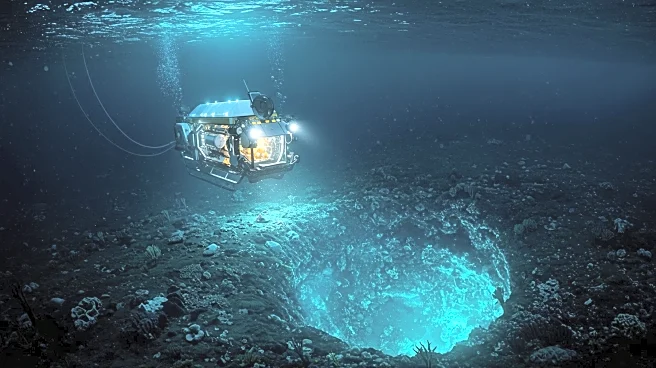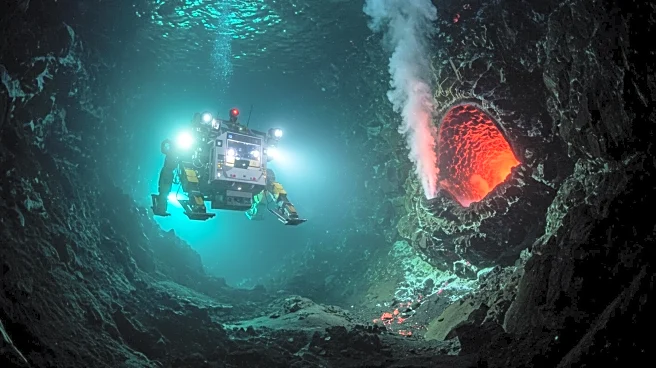What's Happening?
Recent scientific research has unveiled a significant discovery regarding Earth's geology, focusing on the mineral olivine. This mineral, prevalent in oceanic and continental plates, plays a crucial role in transporting water deep into Earth's mantle. The study, conducted by scientists at the University of Potsdam and the Helmholtz Centre for Geosciences, highlights that only the oldest and fastest-moving oceanic plates can carry water to significant depths due to olivine's unique heat-conducting properties. This discovery enhances the understanding of tectonic processes and raises questions about Earth's hidden water reservoirs. Olivine's capacity to conduct heat through radiation is essential in the movement of tectonic plates, influencing seismic activity and mantle hydration.
Why It's Important?
The implications of this discovery are profound, particularly concerning Earth's water reservoirs. The Mantle Transition Zone, located between 255 and 410 miles beneath the surface, is believed to hold more water than all of Earth's oceans combined. Understanding how water reaches this zone is crucial for comprehending Earth's water cycle and its impact on mantle dynamics. The research provides valuable tools for predicting geodynamic behavior, aiding in the prediction of geological phenomena such as volcanic eruptions and earthquakes. This advancement in geoscience research opens new avenues for exploring Earth's internal processes and developing more accurate models of mantle dynamics.
What's Next?
Future research may focus on variations in olivine composition and its heat-conducting properties, further exploring mantle convection and plate tectonics. As scientists continue to unravel Earth's interior mysteries, this study lays the groundwork for interdisciplinary collaboration and innovative measurement techniques. The findings could alter the understanding of Earth's geological history and pose new challenges for predicting and mitigating natural disasters.
Beyond the Headlines
The study's insights into olivine's role in heat transfer and water transport could reshape the understanding of tectonic and seismic activities. The research emphasizes the importance of radiative heat transport in shaping the thermal and mechanical behavior of subducting plates, potentially leading to a reevaluation of existing geological models.












